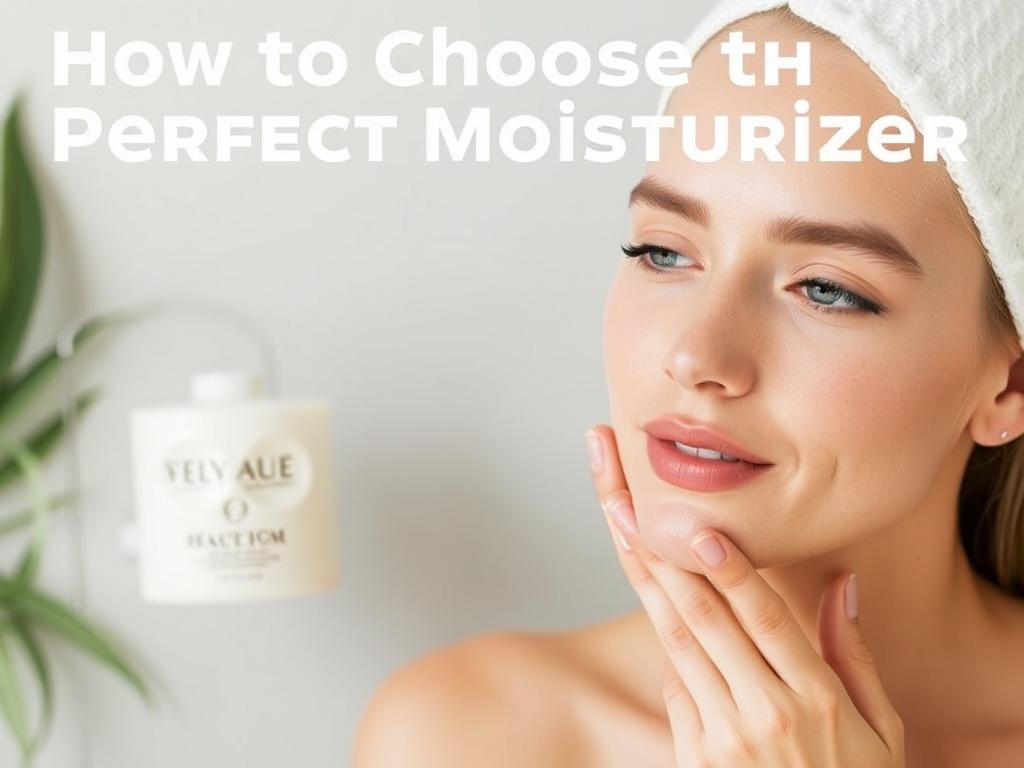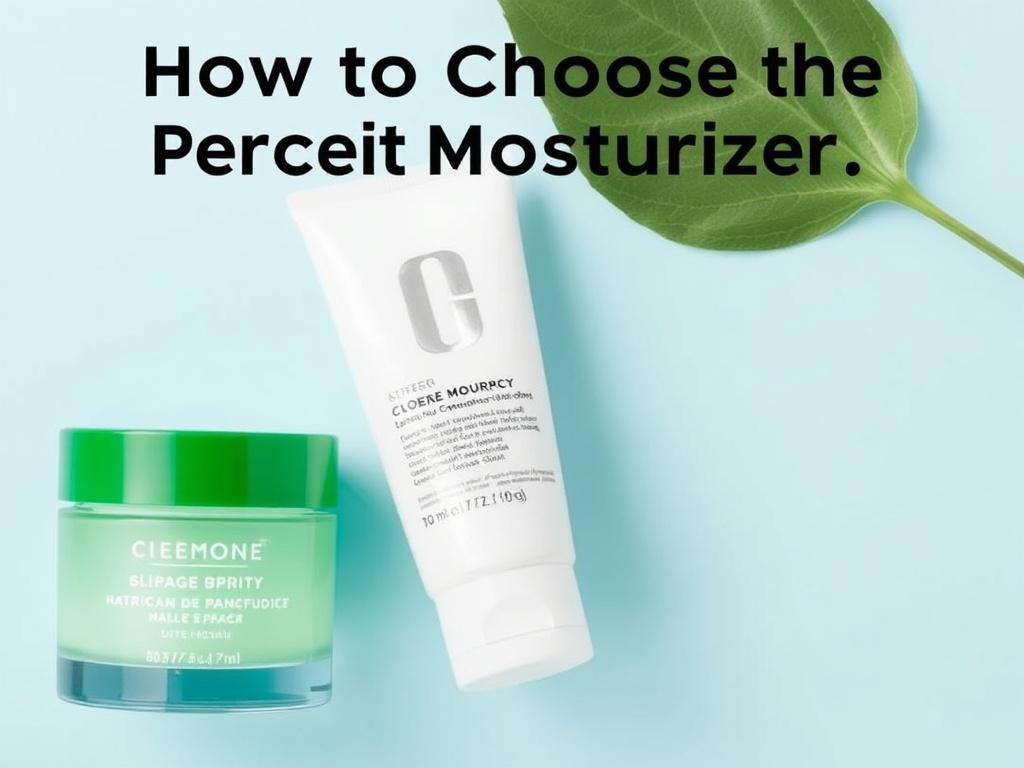Содержание статьи
- 1 Understanding Your Skin Type
- 2 Key Ingredients to Look for in a Moisturizer
- 3 Types of Moisturizers: Creams, Lotions, Gels, and Balms
- 4 Moisturizer for Different Seasons and Climates
- 5 Specialty Moisturizers for Targeted Skin Concerns
- 6 How to Test a Moisturizer Before Committing
- 7 Brand Recommendations and Price Points
- 8 How to Build a Moisturizer into Your Complete Skincare Routine
Choosing the perfect moisturizer can feel like navigating a maze. With so many options on the market, it’s easy to get overwhelmed by the variety of products, ingredients, and promises. Whether you’re new to skincare or a seasoned enthusiast, finding the right moisturizer tailored to your unique skin type and needs is crucial for achieving healthy, radiant skin. In this article, we’ll explore everything you need to know about selecting the best moisturizer, from understanding your skin type to decoding labels and ingredients. Along the way, you’ll discover practical tips and useful insights that will help you confidently pick a product that not only hydrates but also enhances your skin’s natural glow.
Understanding Your Skin Type
Before diving into the vast world of moisturizers, it’s essential to understand your skin type. Moisturizers work differently depending on whether your skin is dry, oily, combination, sensitive, or aging. Using the wrong moisturizer can sometimes do more harm than good—causing breakouts, irritation, or dryness.
- Dry Skin: Feels tight, flaky, or rough. Moisturizers with rich, nourishing textures work best.
- Oily Skin: Looks shiny and can be prone to acne. Lightweight, non-comedogenic moisturizers are ideal.
- Combination Skin: Typically oily in the T-zone (forehead, nose, chin) but dry or normal elsewhere.
- Sensitive Skin: Easily irritated and prone to redness. Look for gentle, fragrance-free formulas.
- Aging Skin: May have fine lines, wrinkles, and loss of elasticity. Choose moisturizers with anti-aging ingredients.
Taking a few minutes to evaluate your skin’s behavior during various seasons and environmental conditions will give you an edge in selecting the perfect moisturizer for your everyday use.
Key Ingredients to Look for in a Moisturizer

The ingredients in a moisturizer determine its effectiveness. It’s important to find formulas that not only provide hydration but also address your specific skin concerns. Here’s a rundown of some of the most beneficial ingredients to keep an eye out for:
| Ingredient | Benefit | Best For |
|---|---|---|
| Hyaluronic Acid | Extremely hydrating by attracting moisture to the skin | All skin types, especially dry and aging skin |
| Glycerin | Helps retain moisture and softens skin | All skin types |
| Niacinamide | Reduces redness and evens skin tone | Sensitive and acne-prone skin |
| Ceramides | Strengthen the skin’s natural barrier | Dry and sensitive skin |
| Retinol | Promotes cell turnover and reduces wrinkles | Aging skin (use cautiously) |
| Salicylic Acid | Exfoliates and unclogs pores | Oily and acne-prone skin |
| Dimethicone | Creates a smooth barrier to lock in moisture | All skin types, especially sensitive skin |
When looking for the perfect moisturizer, reading the ingredient list can feel overwhelming, but identifying these key components will help you make an informed decision.
Types of Moisturizers: Creams, Lotions, Gels, and Balms

Choosing the right consistency and type of moisturizer is as important as the ingredients inside. Different formulations suit different skin types and seasons. Here’s a quick guide:
- Creams: Thick and rich, ideal for dry and mature skin, particularly in colder months.
- Lotions: Lightweight and fluid, perfect for normal to combination skin and warmer weather.
- Gels: Water-based and non-greasy, best suited for oily and acne-prone skin.
- Balms: Heavier, often oil-based, excellent for very dry or compromised skin needing intense moisture.
Knowing your preferences and how your skin reacts to limited moisture helps you select a product that feels comfortable and keeps your skin balanced all day.
Understanding Moisturizer Labels
Sometimes, the packaging and labels can cause confusion rather than clarity. Here are some common terms and what they mean:
- Non-comedogenic: Won’t clog pores, essential for acne-prone skin.
- Hypoallergenic: Less likely to cause allergic reactions, suitable for sensitive skin.
- Oil-free: Helps prevent excess shine and breakouts in oily skin types.
- Fragrance-free: Reduces irritation risk, great for sensitive or reactive skin.
- SPF included: Provides sun protection; perfect for daytime moisturizers.
- Dermatologist-tested: Indicates clinical testing but doesn’t guarantee suitability.
Understanding these labels helps you narrow down options quickly, especially when choosing between dozens of moisturizers in one aisle or online.
Moisturizer for Different Seasons and Climates
Your skin’s needs change depending on the weather, humidity, and temperature. What works in winter might feel heavy and clogged in summer. Let’s look at how to adapt your moisturizer choices throughout the year and based on your environment:
| Season / Climate | Recommended Moisturizer Type | Why |
|---|---|---|
| Winter | Rich creams or balms with occlusive agents like petrolatum or shea butter | Cold, dry air strips moisture; heavier products prevent water loss |
| Summer | Lightweight lotions or gels, preferably oil-free | Hot weather increases sweat and oil production; lighter formulas feel refreshing |
| Humid climates | Water-based gels or lotions | Excess moisture in the air means you don’t need heavy creams |
| Dry climates | Thicker creams with humectants and emollients | Low humidity steals moisture; rich products restore barrier function |
Switching moisturizers or adjusting your routine with the seasons can dramatically improve the health and appearance of your skin.
Tips for Applying Moisturizer Effectively
Even the best moisturizer won’t work properly if applied incorrectly. Here are a few tips to boost its performance:
- Apply on damp skin: After cleansing or toning, applying moisturizer while your skin is still slightly wet helps lock in hydration.
- Use the right amount: A pea-sized amount is often enough for your face. Overusing can sometimes clog pores.
- Be gentle: Use upward, circular motions to massage the moisturizer into your skin without tugging.
- Don’t forget your neck and décolletage: These areas also benefit from hydration and often show signs of aging.
- Apply sunscreen after moisturizer for daytime: If your moisturizer doesn’t have SPF, follow up with a sunscreen.
Routine and technique can be just as important as your product choice when it comes to achieving that dewy, supple skin you desire.
Specialty Moisturizers for Targeted Skin Concerns
Beyond basic hydration, some moisturizers include additional benefits catered to specific skin issues. Here are some types you might consider:
- Anti-aging moisturizers: Contain ingredients like retinol, peptides, or antioxidants to stimulate collagen and reduce wrinkles.
- Acne-fighting moisturizers: Formulated with salicylic acid or benzoyl peroxide to help prevent breakouts.
- Brightening moisturizers: Include vitamin C or niacinamide to improve dullness and dark spots.
- Calming moisturizers: Packed with soothing ingredients like aloe vera, chamomile, or oat extract for sensitive or irritated skin.
- Mattifying moisturizers: Control excess oil and reduce shine, ideal for oily skin types.
Identifying your primary skin concern helps you choose a moisturizer that actively supports your goals while providing essential hydration.
Common Mistakes to Avoid When Choosing a Moisturizer
Even seasoned skincare users can fall into common traps while shopping for moisturizers. Here are some mistakes to avoid:
- Ignoring your skin type and beyond-the-label marketing.
- Switching products too often before seeing results.
- Choosing heavily fragranced or alcohol-based products if you have sensitive skin.
- Using moisturizers with comedogenic ingredients on acne-prone skin.
- Not patch-testing new products, especially if you have sensitive or reactive skin.
- Applying moisturizer incorrectly or skipping important layers like sunscreen.
Being mindful of these pitfalls can prevent unnecessary irritation, wasted money, and frustration.
How to Test a Moisturizer Before Committing
Testing is a great way to know if a moisturizer suits you, especially when trying new brands or products. Here are some easy at-home testing tips:
- Patch test: Apply a small amount behind your ear or on your wrist. Wait 24-48 hours for any redness or reaction.
- Texture check: Feel how it absorbs into your skin — greasy, sticky, or lightweight? Does it leave residue?
- Short-term wear: Use the moisturizer for a few days and monitor for breakouts, dryness, or irritation.
- Look for lasting hydration: Check if your skin feels supple and comfortable hours after application.
A little diligence at this stage can save you from long-term mistakes and help you find your perfect match.
Brand Recommendations and Price Points
While the effectiveness of a moisturizer relies mostly on ingredients and suitability, brand reputation and price often influence decisions. Here’s a quick guide to help you navigate:
| Category | Example Brands | Price Range | Key Features |
|---|---|---|---|
| Budget | Cetaphil, Neutrogena, CeraVe | $10 – $20 | Simple, dermatologist-recommended, often fragrance-free |
| Mid-range | Kiehl’s, Clinique, La Roche-Posay | $25 – $50 | Targeted formulas for multiple skin types and concerns |
| Luxury | La Mer, Drunk Elephant, Sunday Riley | $60 and above | Premium ingredients, advanced technology, and elegant textures |
Remember that price doesn’t always guarantee better performance. Sometimes, drugstore moisturizers deliver exceptional results for less.
How to Build a Moisturizer into Your Complete Skincare Routine
A moisturizer is one part of a holistic skincare routine. If you want to maximize its benefits, consider how it fits into the steps you follow daily:
- Cleansing: Start with a gentle cleanser suited for your skin.
- Toning: Optional, but can help balance skin and prepare it for moisturizer.
- Serums/Treatments: Apply targeted products, such as vitamin C or retinol serums.
- Moisturizer: Seal in hydration and boost the skin’s barrier.
- Sunscreen: Essential in the daytime to protect from UV damage.
Consistency is key! Using your moisturizer regularly and correctly alongside other products will help you achieve optimal results.
Conclusion
Choosing the perfect moisturizer doesn’t have to be daunting. By understanding your skin type, learning about key ingredients, and considering different formulations, you can confidently select a product that enhances your skin’s health, radiance, and comfort. Paying attention to seasonal changes, reading labels carefully, and avoiding common mistakes will set you on the right path. Testing products and integrating them thoughtfully into your skincare routine ensures you get the best results for your unique skin needs. Remember, the perfect moisturizer isn’t just about the bottle—it’s about how it makes you feel and how effectively it supports your skin’s natural beauty day after day. So take your time, listen to what your skin tells you, and enjoy the glowing journey ahead!

